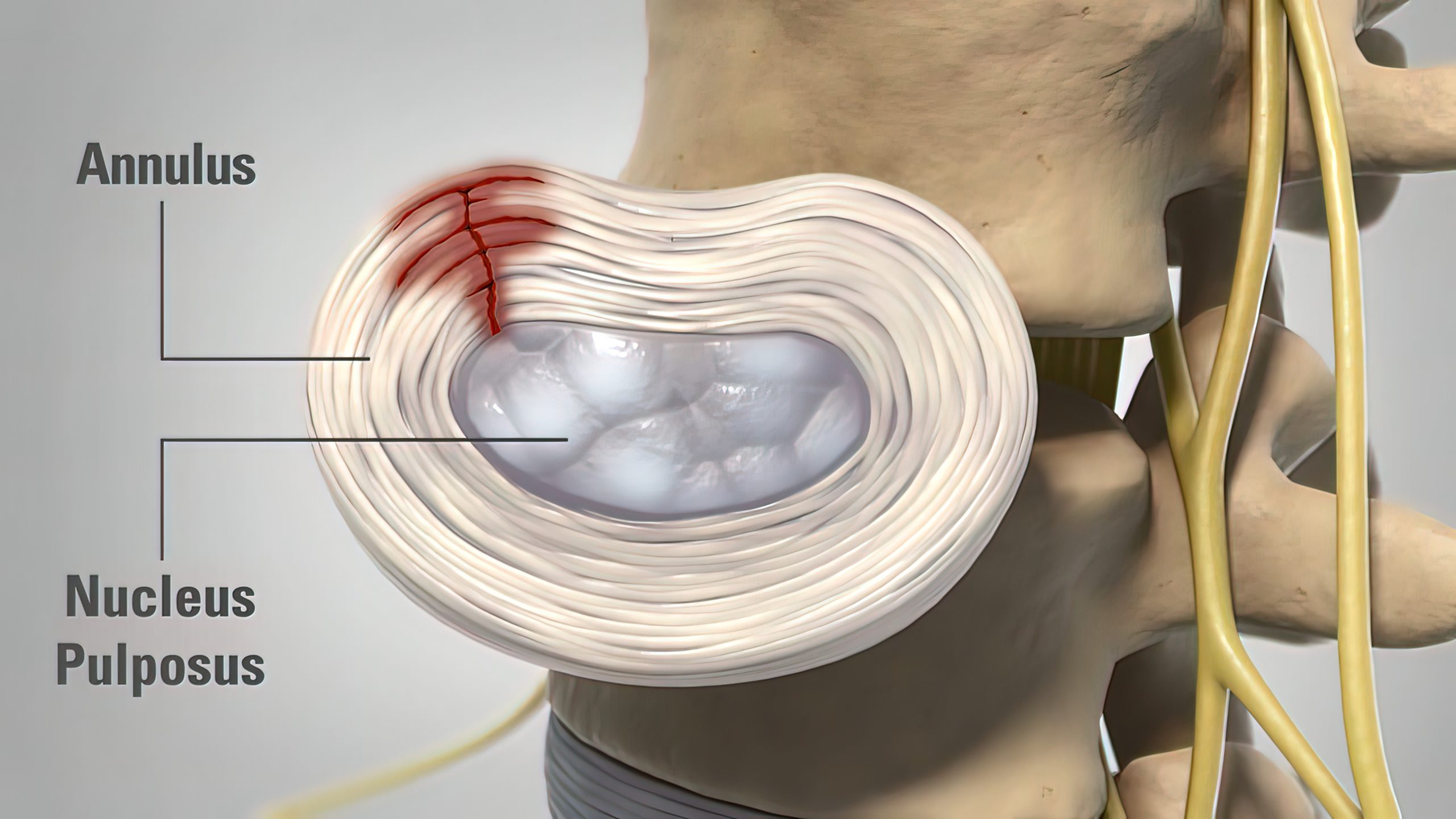Leaky Disc Syndrome
Leaky disc syndrome is a term that refers to pain and symptoms caused by annular tears. When the nucleus pulposus leaks out of the spinal disc, it can cause symptoms in the lower back, legs, neck, or arms.
Patients don’t always realize that these symptoms may be connected to annular tears.
But why do annular tears cause these symptoms?

Understanding Leaky Disc Syndrome
Spinal discs play an important role in the body, including:
- Preventing the vertebrae from rubbing against each other
- Distributing force and stress placed on the spine
- Ensuring that nerves around the spine don’t become pinched or compressed by the nucleus pulposus
They are also made up of two parts: the outer annulus fibrosus and the inner nucleus pulposus. Imagine the spinal disc like a jelly doughnut. The annulus fibrosus is made up of 22-25 layers of fibers that connect to the vertebrae above and below the disc. The annulus fibrosus encloses the jelly-like nucleus pulposus, which may cause irritation and inflammation if it makes contact with surrounding spinal nerves.
Unfortunately, the fibers of the annulus fibrosus may break down from daily wear and tear as a result of age or injury. This may lead to the development of tears in the outer part of the spinal disc, irritating surrounding nerves.
This is known as Leaky Disc Syndrome and may be the cause of some spine conditions, such as:
- Disc herniation, bulges, and protrusions
- Degenerative disc disease
- Spine arthritis
- Bone spurs
Common Symptoms
As with most issues affecting the spine, your symptoms will depend on the location of the affected disc or discs. If your cervical spine is affected, your head, neck, arms, and hands may be affected. If your lumbar spine is affected, you may feel symptoms in your lower back, legs, and feet.
More specific symptoms of a leaky disc include:
- Pain that affects the lower back
- Pain that radiates to the arms, hands, fingers, legs, or feet
- Headaches
- Numbness or tingling in the extremities
- Sciatica pain
Research shows that leaky discs also cause more than just nerve root damage. Leaking from torn spinal discs may also cause fatigue, depression, and limited function.
Diagnosis
The most accurate way to diagnose Leaky Disc Syndrome is with an Annulargram™, which is performed during the Discseel®Procedure.
During the Annulargram™, water-soluble contrast will be injected into your spinal discs while live X-ray is utilized to view the flow of contrast, which will identify any tears within each disc or confirm if the disc is normal. Following this, the Discseel®Procedure will be used to treat all torn spinal discs.


